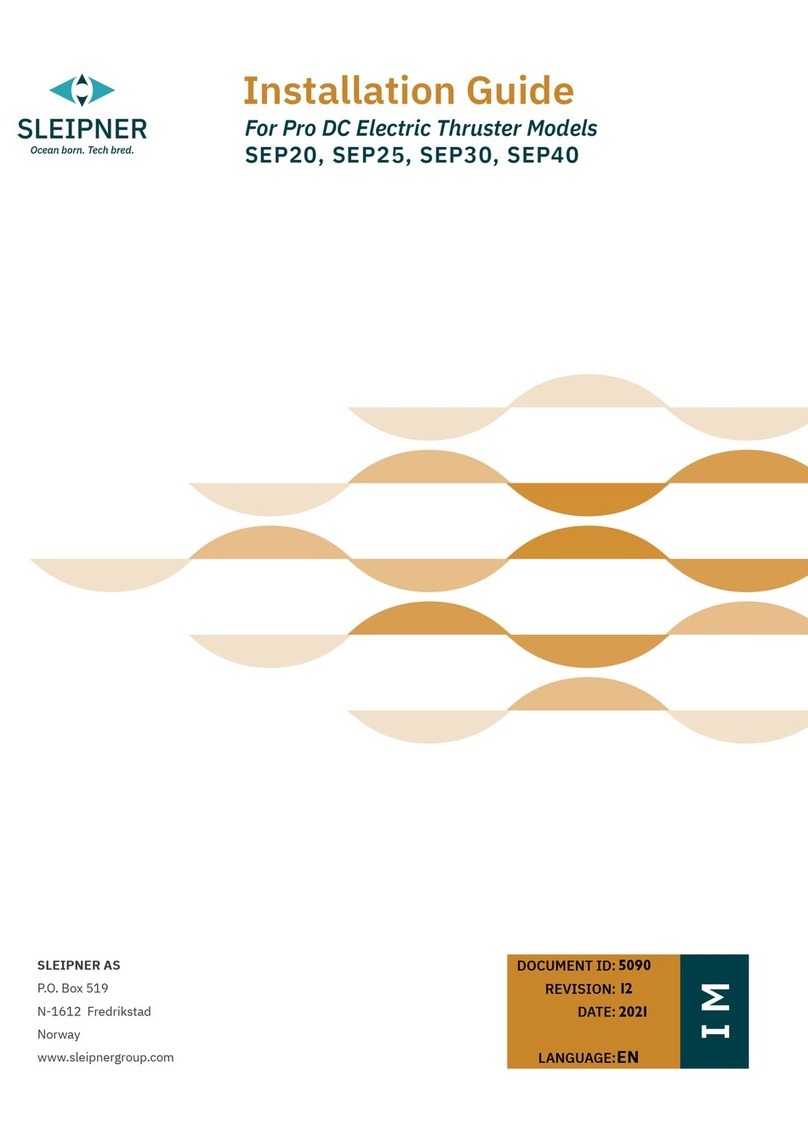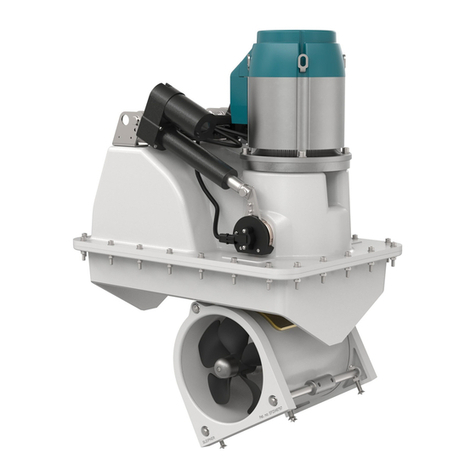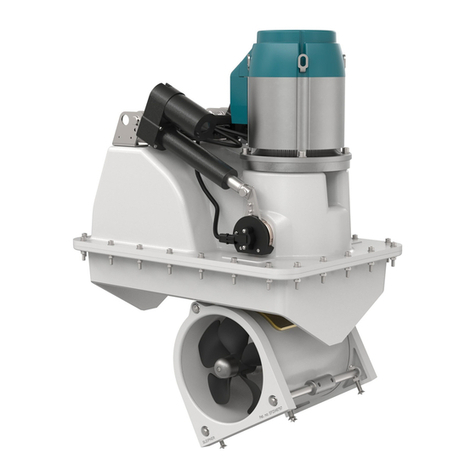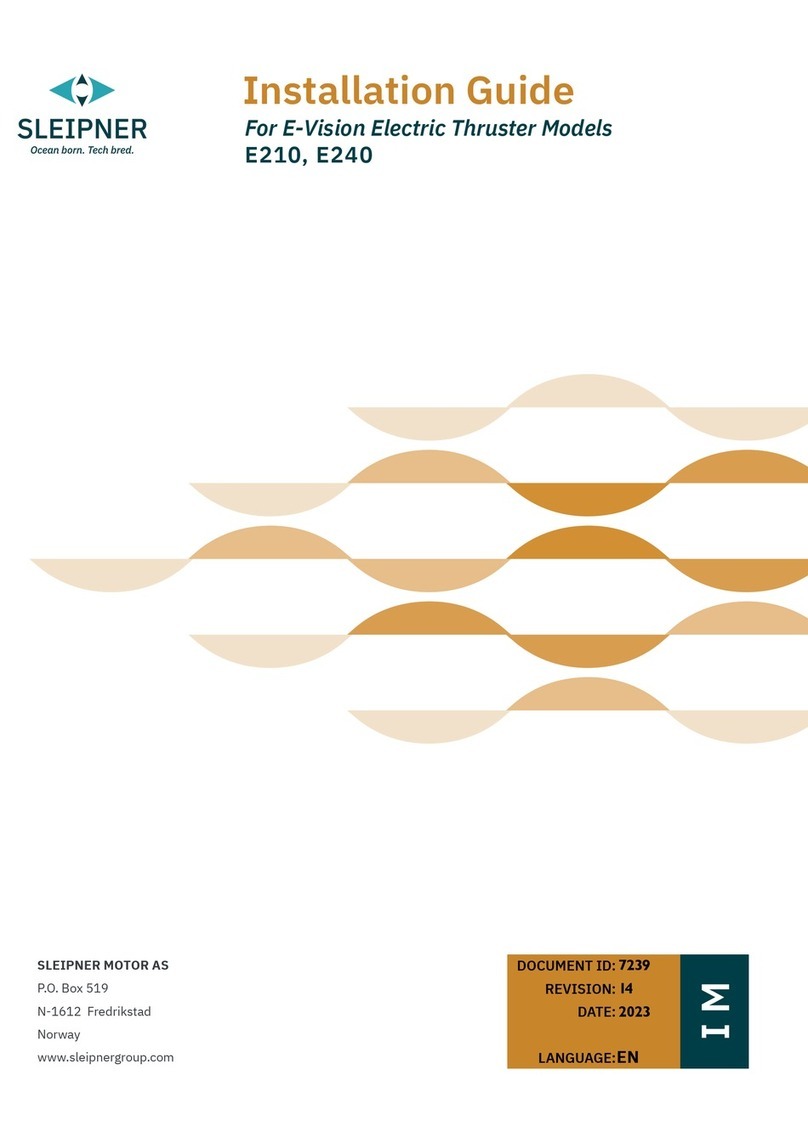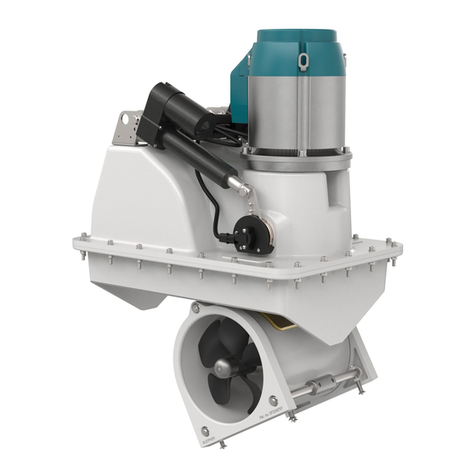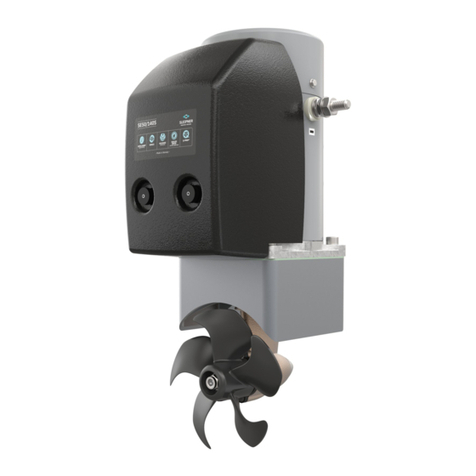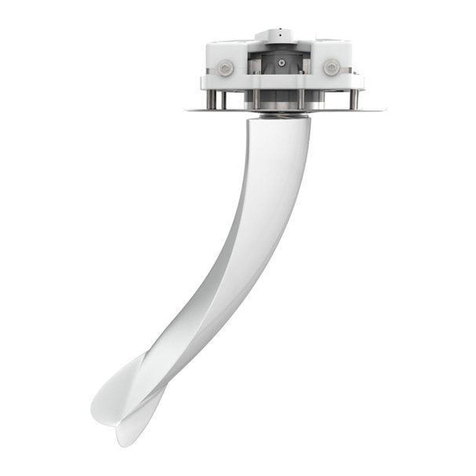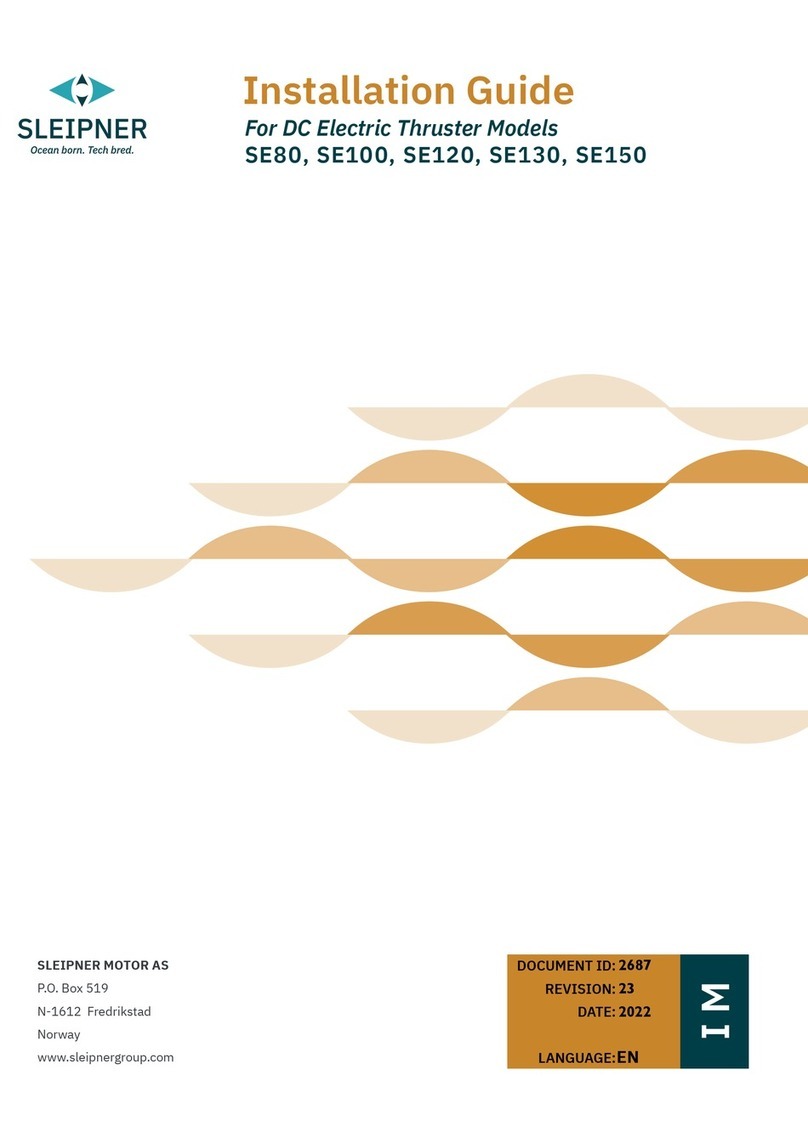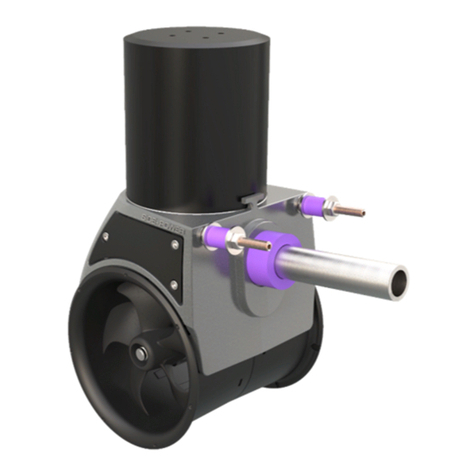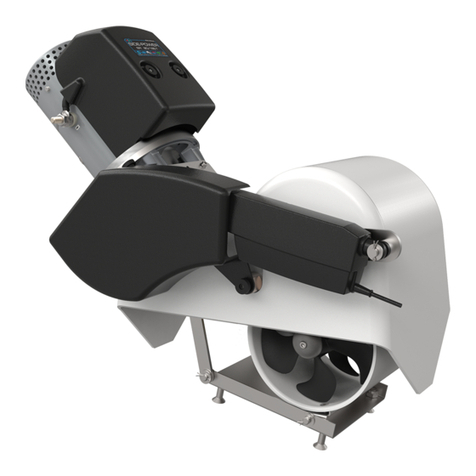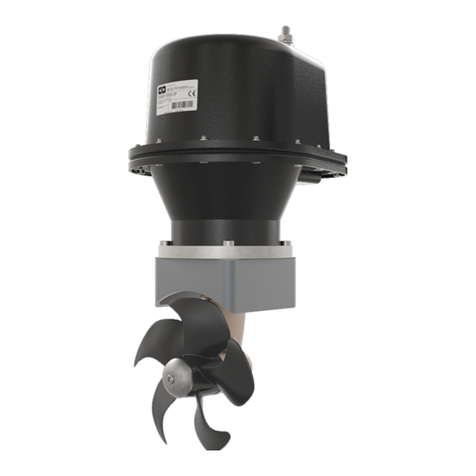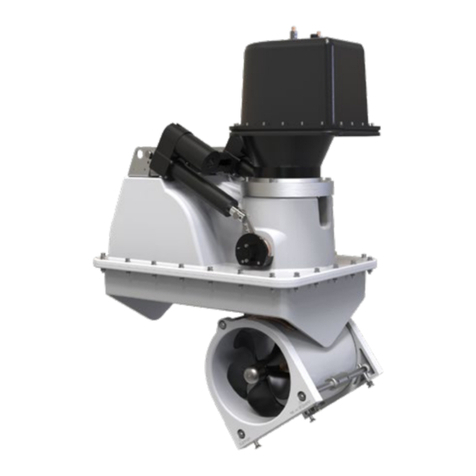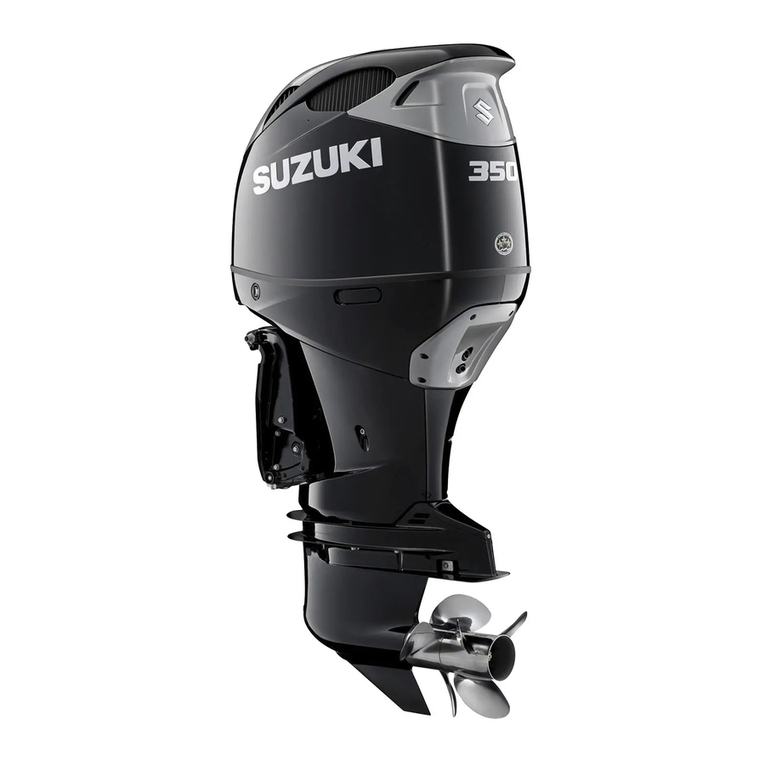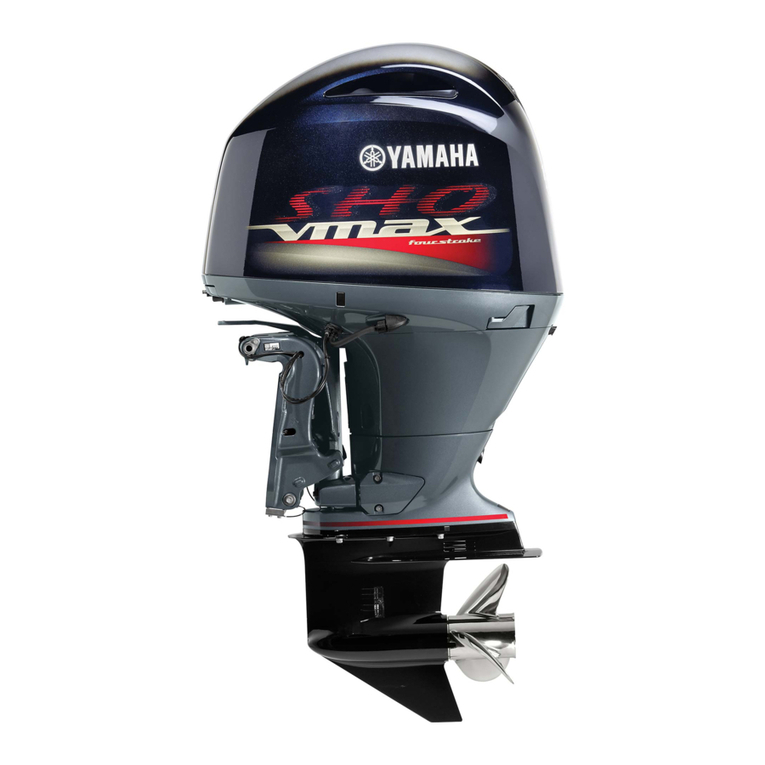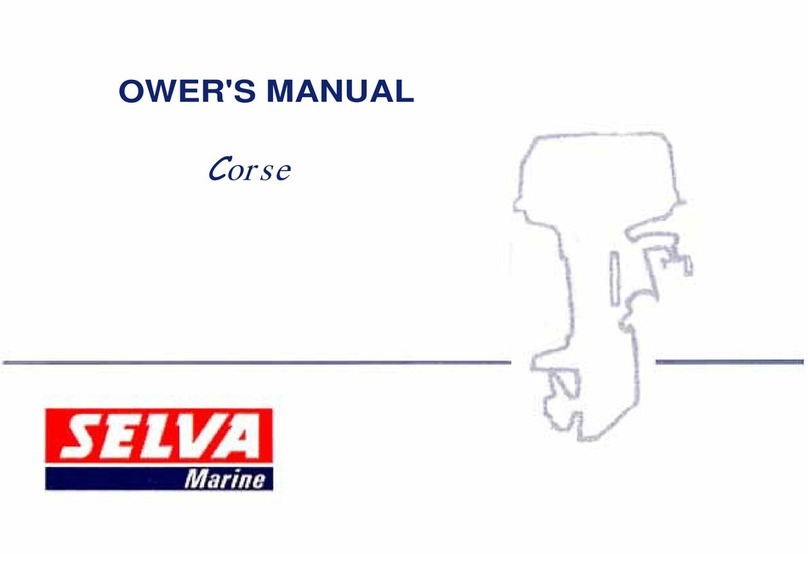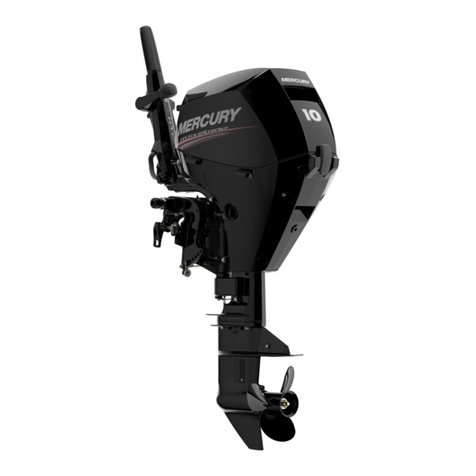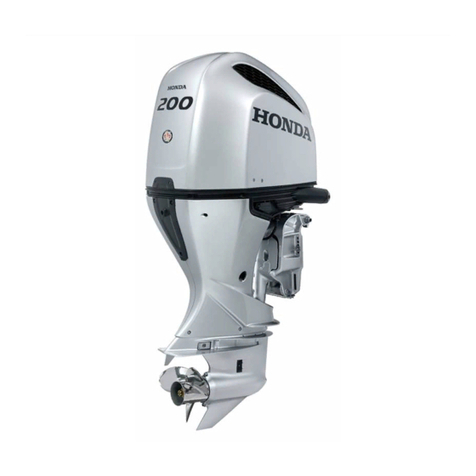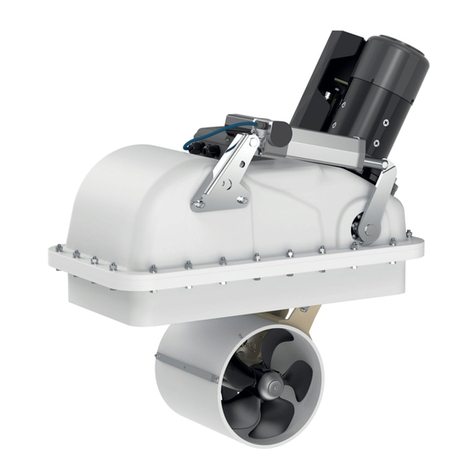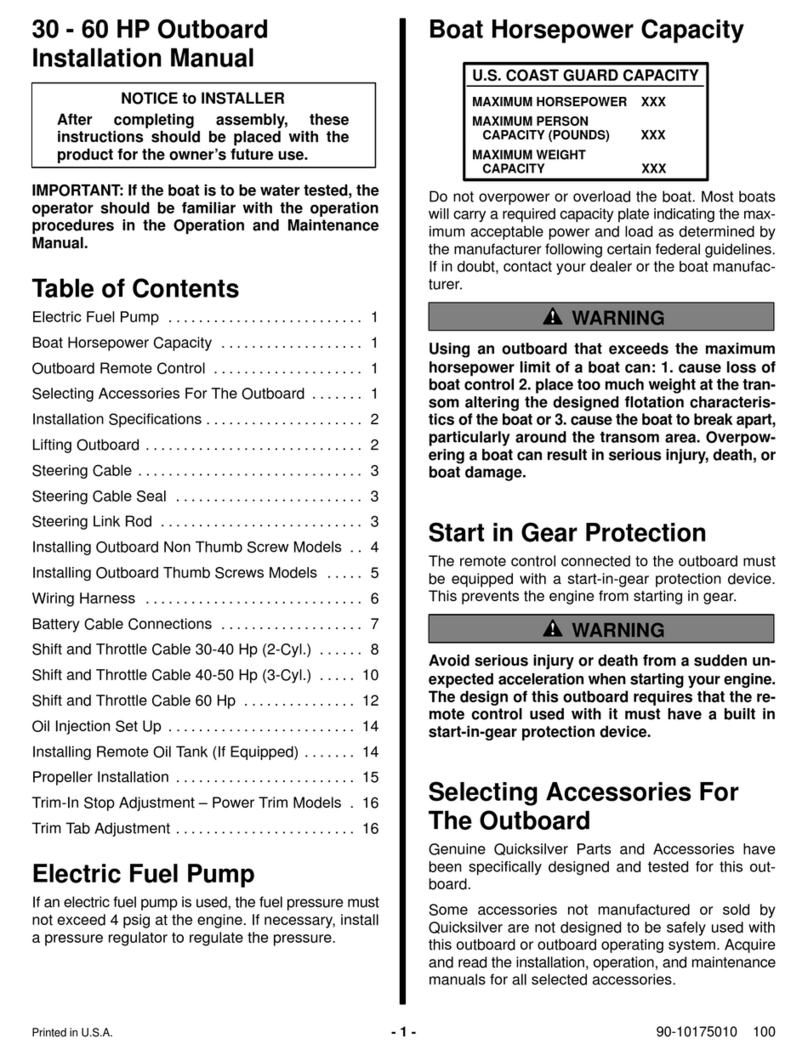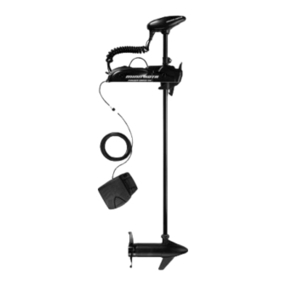
27243 62023
-
eVision
Sleipner Motor AS
P.O. Box 519, Arne Svendsensgt. 6-8
N-1612 Fredrikstad, Norway
MC_0020
Contents
Accidental activation of the retract mechanism can cause serious injury due to the high-pressure
force used for closing the hatch. IF operating the hatch during any work/ maintenance around or
inside the retract hatch, USE CAUTION.
MC_0411
Installation Manual
Responsibility of the Installer .................................................................................................................................................................... 3
General Installation Consideration and Precaution Guidelines................................................................................................................ 3
Product Measurements ............................................................................................................................................................................ 5
Product Clearance Requirements .............................................................................................................................................................. 6
Product Specications................................................................................................................................................................................ 6
Hull Specications...................................................................................................................................................................................... 6
Positioning of the Retract thruster............................................................................................................................................................. 7
Preparing a Sandwich Hull for Retract Systems ........................................................................................................................................ 8
Marking and Trimming of SRF Flange ........................................................................................................................................................ 9
Installation Pre-check.............................................................................................................................................................................. 11
Required Modications After Pre-check.................................................................................................................................................. 12
SRF Flange Installation ............................................................................................................................................................................ 13
Motor House Installation.......................................................................................................................................................................... 14
Hatch Installation ..................................................................................................................................................................................... 15
V-Motor to House Installation.................................................................................................................................................................. 16
Electrical Installation ............................................................................................................................................................................... 17
Motor Lug Connection .............................................................................................................................................................................. 18
Electrical Reference Guide....................................................................................................................................................................... 18
Manual Main Switch Wiring Diagram 48V Retract Thruster .................................................................................................................... 19
Automatic Main Switch Wiring Diagram 24V Retract Thruster ............................................................................................................... 20
S-Link System Description ....................................................................................................................................................................... 21
Check drive shaft alignment..................................................................................................................................................................... 22
Calibrate drive shaft alignment................................................................................................................................................................ 22
Actuator Conguration ............................................................................................................................................................................. 22
LED Indication .......................................................................................................................................................................................... 22
Control Panel Installation ....................................................................................................................................................................... 23
Service and Support ............................................................................................................................................................... 24
Product Spare Parts and Additional Resources ....................................................................................................................... 24
Warranty Statement ............................................................................................................................................................... 24
Patents.................................................................................................................................................................................... 24
